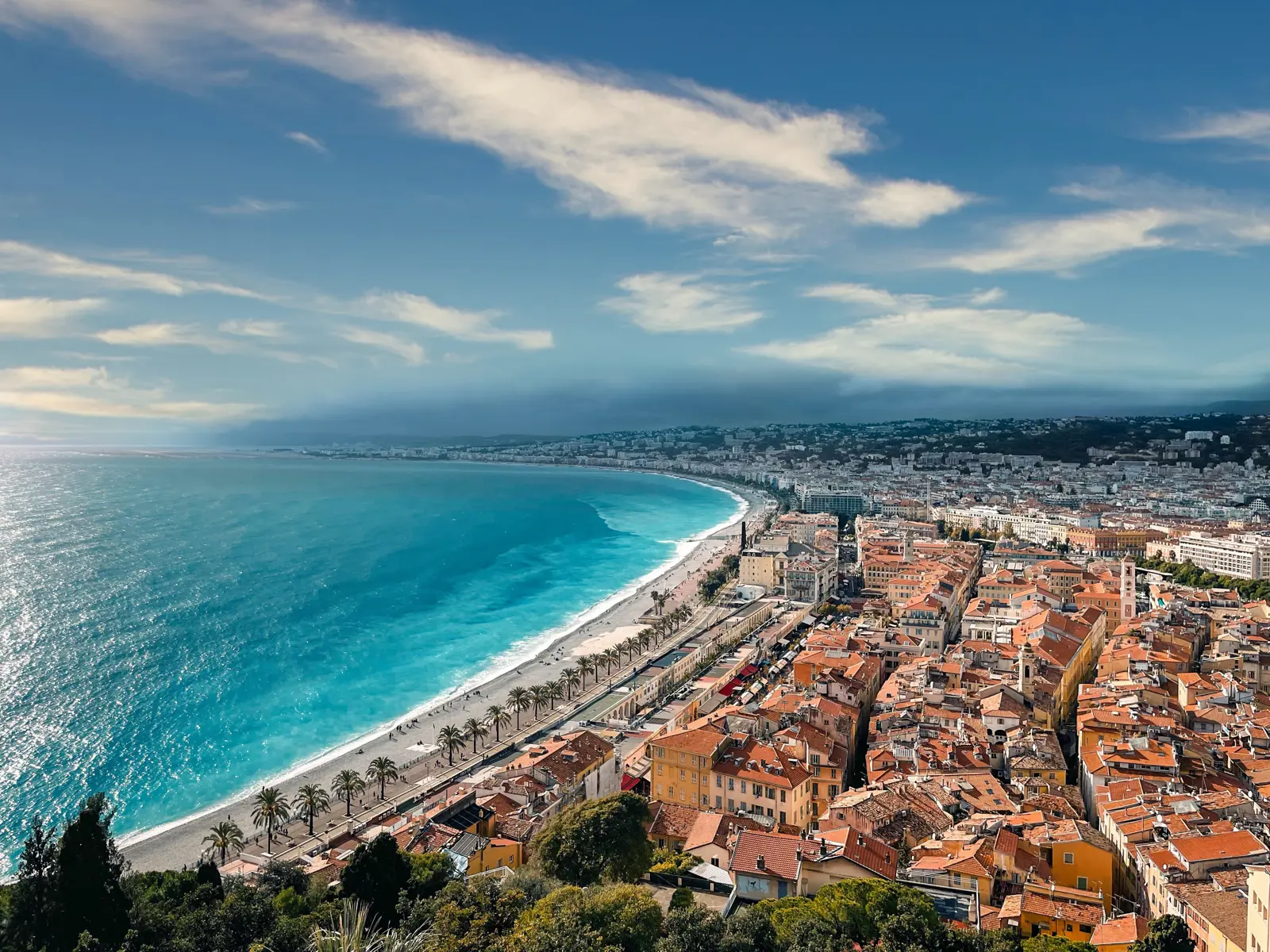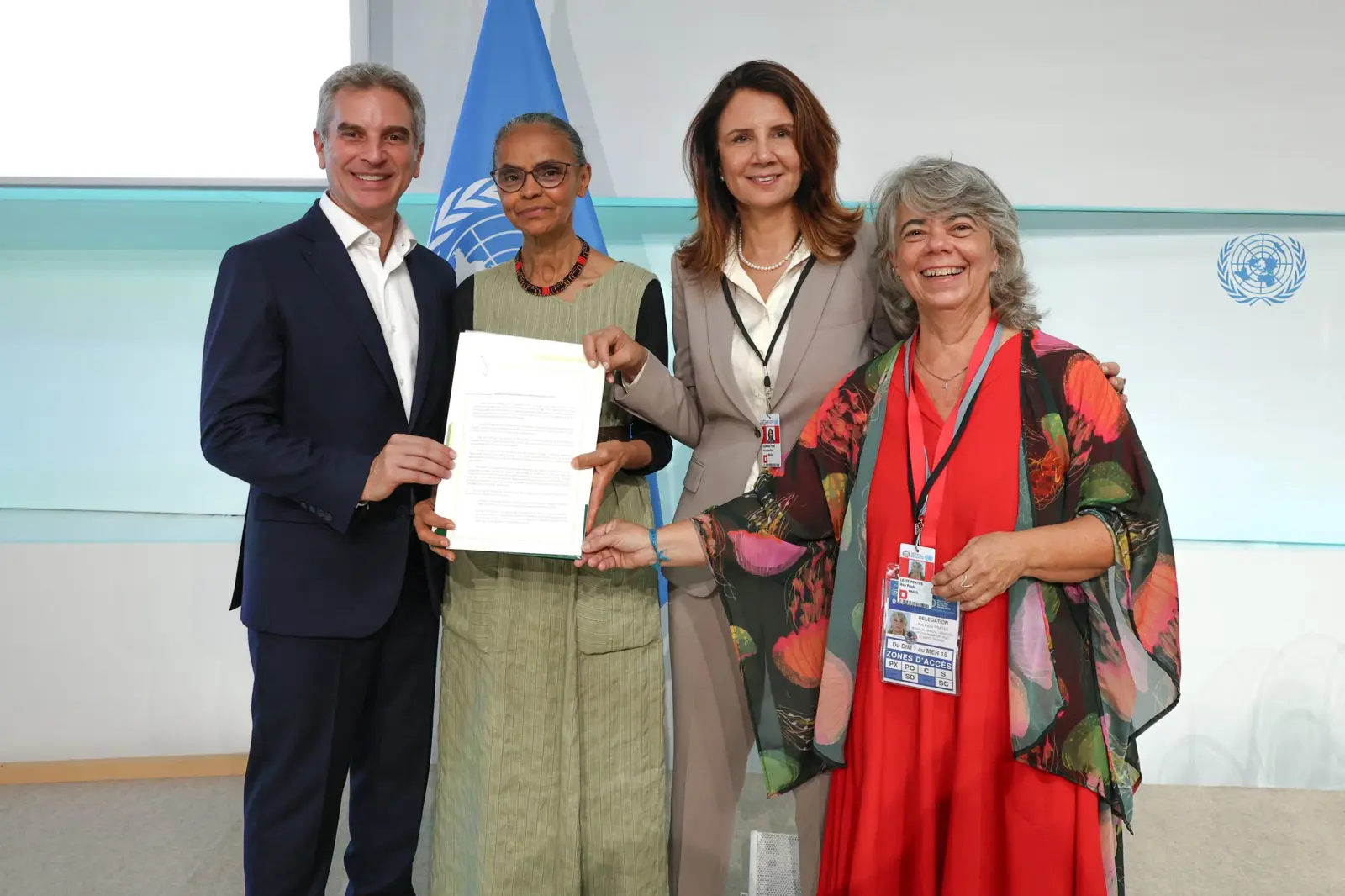Solutions Take Centre Stage at COP30, Marking a New Era of Accelerated Climate Action. Read it here.
Solutions Take Centre Stage at COP30, Marking a New Era of Accelerated Climate Action. Read it here.
Friday, 13 June 2025
World leaders, policymakers and financial institutions gathered this week to discuss urgent action to restore and protect the world’s oceans at the United Nations Ocean Conference (UNOC) in Nice, France.
For the Ocean community and Marrakech Partnership, it was an opportunity to help shift the conversation from pledges to practical tools for delivery and spotlight two new contributions to the agenda: a landmark report on the role of saltmarshes in climate and biodiversity goals, and a new investment protocol to help financial institutions align with SDG14.
Oceans cover over 70% of our planet and are central to our humanity. They regulate climate change, support biodiversity, and sustain billions of livelihoods, yet continued pollution and unsustainable practices – from industrial fishing to the dumping of chemical waste – have put extreme pressures on this critical ecosystem.
“Our oceans are a source of life, but also one of the frontlines of climate risk”, said Dan Ioschpe, High-Level Champion for COP 30. “From the Caspian to the Pacific, every coastline matters. Every solution counts” added Nigar Arpadarai, High-Level Champion for COP 29.
At the close of the conference, 19 new ratifications bring the High Seas Treaty total to 50. France expects to reach the 60-country threshold before 23 September 2025, which would bring the treaty into force in 2026. Additionally, over 100 countries have backed the Nice Call for an ambitious plastics treaty.
Laurence Tubiana, President and CEO of the European Climate Foundation, and previous High-Level Champion welcomed these efforts. She said “The ocean is a metaphor for multilateralism: beautiful, dynamic, indispensable. And increasingly fragile. When it works, it sustains us; if it breaks, dramatic consequences will ripple far and wide.”
French President Emmanuel Macron pledged increased investment in marine conservation and sustainable fishing, while Brazilian President Luiz Inácio Lula da Silva underscored the importance of coastal ecosystems like mangroves in the fight against climate change. Collaboratively, they launched a ‘Blue NDCs’ initiative to connect ocean and climate-related policymaking.
These commitments come amid a troubling reality: governments still spend approximately $35 billion annually on fisheries subsidies, with $22 billion supporting unsustainable practices such as bottom trawling that drive overfishing and degrade marine habitats.
Brazil also formally supported the Mangrove Breakthrough, which aims to restore and protect 15 million hectares of mangroves globally by 2030. The Climate High-Level Champions and its partners are working to mobilise an investment of $US4 billion to achieve this.
From left to right: Carlos Correa, Minister Marina Silva, Ana Toni, Ana Paula Prates support the Mangrove Breakthrough.
Published by WWF and produced in collaboration with the Climate High-Level Champions, the State of the World’s Saltmarshes report brings long overdue attention to one of the most effective yet undervalued coastal ecosystems. Salt marshes store up to five times more carbon per hectare than tropical forests. They also provide vital habitat for wildlife, protect coastlines from storms, and support livelihoods for vulnerable communities.
Despite their importance, saltmarshes are disappearing fast. Development, pollution, and rising seas and eroding their capacity to act as nature’s buffers Compared to other nature-based solutions, they receive far less funding and policy support.
The report sets out priority regions for restoration, encourages integration into climate and biodiversity plans and recommends targeted finance and community-led approaches to protect and restore what remains. But none of this can be achieved without the financial systems to back it.
That is why the second report, launched last month, by the UN Environment Programme Finance Initiative (UNEP FI) and UN Global Compact - in collaboration with the Climate High-Level Champions is critical. The Ocean Investment Protocol provides a framework to help financial institutions, insurers, ocean industries, governments, and development banks align their activities with Sustainable Development Goal 14, Life Below Water.
A healthy ocean can cut 35 percent of global emissions by 2050 and grow into a $5.5 trillion market. By aligning financial flows with ocean health, the protocol aims to help chart a path towards a resilient and thriving blue economy.
The protocol marks a major step in scaling blue finance,offering practical guidance to manage risk, meet climate and nature targets, and unlock investment across the five priority sectors of the Oceans Breakthroughs: ocean-based transport, renewable energy, aquatic food, coastal tourism, and marine conservation.
Six months after launching the ‘2030 Breakthrough’ target on Marine Biodiversity and Ocean Health at COP29, momentum is growing. At UNOC, partners including the Sustainable Shipping Initiative and the UN Foundation hosted a special event to drive progress. The focus was on collective action, connecting policy and finance to turn commitments into measurable impact.
The Taskforce on Nature-related Financial Disclosures (TNFD) has released new guidance for the maritime sector’s actions on fishing and transport. The guidance helps marine transport and cruise lines, including how to identify marine protected areas, protect migratory corridors for marine mammals and better understand the importance of coral reef ecosystems. It also addresses fishing impacts and offers guidance for illegal practices.
A coalition of more than 35 countries have called for tackling underwater noise pollution to protect marine life. This includes quieter ship design, noise considerations for protection areas and supporting capacity-building through shared resourcing. “Too often, the issue of ocean noise has been sidelined in global environmental discourse” said Panamanian Environment Minister Navarro. In the UNFCCC regional climate week recently, Nigar Arpadari, Climate High-Level Champion for COP29, commended his leadership.
Mayors from 18 cities worldwide launched a new Ocean Rise & Coastal Resilience Coalition, uniting coastal cities and regions to tackle sea level rise. The initiative highlights strong subnational leadership and aims to boost adaptation efforts, knowledge sharing, and tailored climate finance.
UNOC reinforced a growing consensus that ocean health must be central to climate action. As attention turns towards COP30 in Belem, the focus must be on scaling what works, funding what matters, and implementing existing global targets, namely the “30×30” goal of conserving and managing30 percent of marine and coastal areas by 2030.

